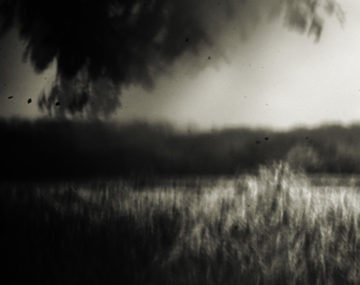Nick Warr at The Paris Review:
 Watching a video of Sebald, at his desk, surveying his photographs with magnifying glass in hand, it is tempting to interpret his work—the prose fiction, the poetry, the essays—as existing, prior to the texts, as an assemblage of pictures. One imagines a pristine terrain of images being dissolved into the current of language, each photograph gradually written away until only the most unyielding ones remain. The jumble of photographs and manuscript pages obscuring and framing each other in the television image of Sebald’s desk are reflected in a similar mixed spatial and temporal aggregation on the printed page, where the whole is defined as much by overlapping and masking as by juxtaposition. Sometimes the edges of the photographs cause shadows to fall on the text and vice versa. Windows and lighthouses, doorways and gravestones: sometimes, the images protrude from the temporal plane of the writing (the time of the narrative); sometimes, they are visible from below the surface. The interruption of reading performed by the images confirms the irregular chronological dynamic of Sebald’s work. Constantly hindered, sent back into countless eddies and still backwaters, time, like the mineral water that is sieved through the salt frames of Bad Kissingen, percolates as much as it flows.
Watching a video of Sebald, at his desk, surveying his photographs with magnifying glass in hand, it is tempting to interpret his work—the prose fiction, the poetry, the essays—as existing, prior to the texts, as an assemblage of pictures. One imagines a pristine terrain of images being dissolved into the current of language, each photograph gradually written away until only the most unyielding ones remain. The jumble of photographs and manuscript pages obscuring and framing each other in the television image of Sebald’s desk are reflected in a similar mixed spatial and temporal aggregation on the printed page, where the whole is defined as much by overlapping and masking as by juxtaposition. Sometimes the edges of the photographs cause shadows to fall on the text and vice versa. Windows and lighthouses, doorways and gravestones: sometimes, the images protrude from the temporal plane of the writing (the time of the narrative); sometimes, they are visible from below the surface. The interruption of reading performed by the images confirms the irregular chronological dynamic of Sebald’s work. Constantly hindered, sent back into countless eddies and still backwaters, time, like the mineral water that is sieved through the salt frames of Bad Kissingen, percolates as much as it flows.
more here.
